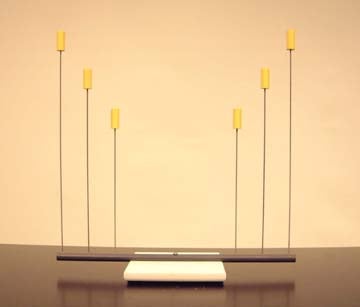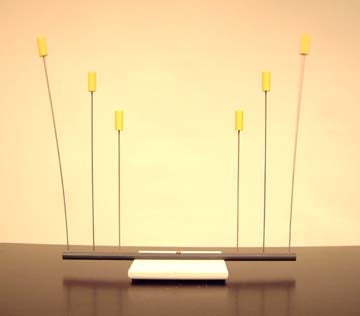W.5(1) – Sympathetic Tuning Forks
These tuning forks (286 Hz) are mounted on resonance boxes. The size of the air column is chosen so that it will reinforce the same sound that the tuning fork gives. That is, the box acts as a closed organ pipe and the length of the box corresponds approximately to one-quarter of a wave in air of the sound produced by the fork. Place the resonance boxes aligned and with their openings facing each other. Now strike one fork sharply with the provided rubber hammer. This throws the box to which the fork is attached into strong vibration. The air column will also be set in vibration and all the air immediately around will be set in vibration. This vibration creates strong vibration in the box to which the fork is attached. This air column in the second box causes the tuning fork to vibrate. The second instrument is thus set into vibration by the first instrument.
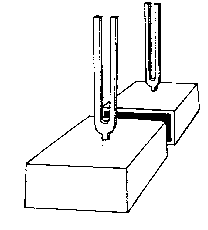
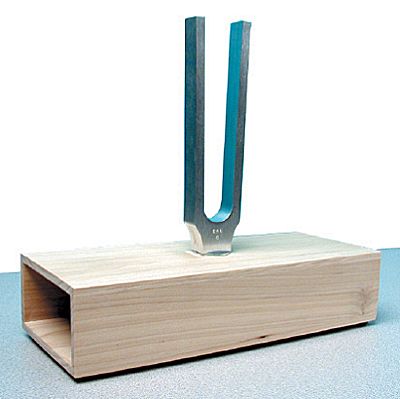
W.5(2) -Resonance Apparatus
This apparatus is used to determine standing wavelength of sound, using a tuning fork with a known frequency and a water filled tube. It consists of a tall stand holding a small water reservoir near its top and a 1.2 m plastic tube connected at its lower end to the bottom of the water’s reservoir. The reservoir can be moved up and down the stand so that the tube’s water level can be adjusted. A loud sound will be produced when a vibrating tuning fork is brought near the tube’s opening and the water level is adjusted for the resonant cavity length. It can also be used to determine the velocity of sound on air.
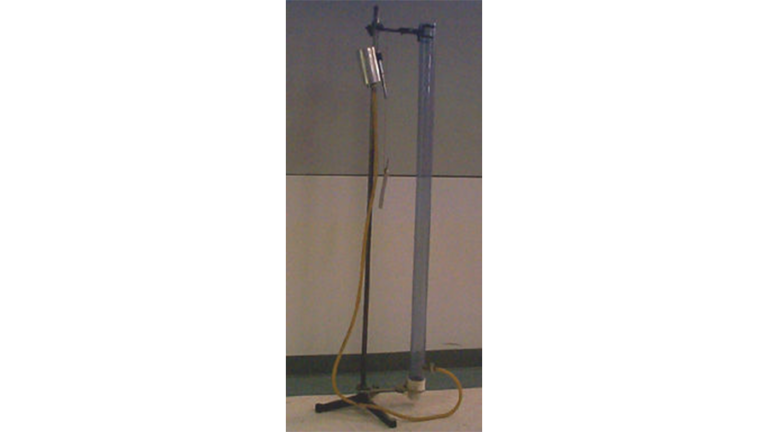
W.5(3) – Glass Breaking Using Resonance
A glass is placed in front of a powerful horndriver that is connected to a receiver and a function generator. With the aid of the pith ball one can demonstrate the vibrations of the glass at its natural frequency. Using a strobe light and a camera, the image can be projected on to the screen to show the deformations of the glass and the shattering of the glass when the volume is increased.
Note: 48 Hour notice required for setup!
Click here to see a video of this demo.
W.5(4) – ME-311 Resonance Demonstrator
The device consists of three pairs of equal-length wires terminated by colored weights. When one weight is “plucked” and thus set oscillating, its counterpart (same length) on the opposite side of the device will oscillate with large excursions while the other weights and wires remain relatively motionless.
In addition to demonstrating mechanical resonance, analogies can be made to sound and electrical resonance. A resonant pair of weights can be thought of as two resonant tuning forks or two tuned LC circuits.
